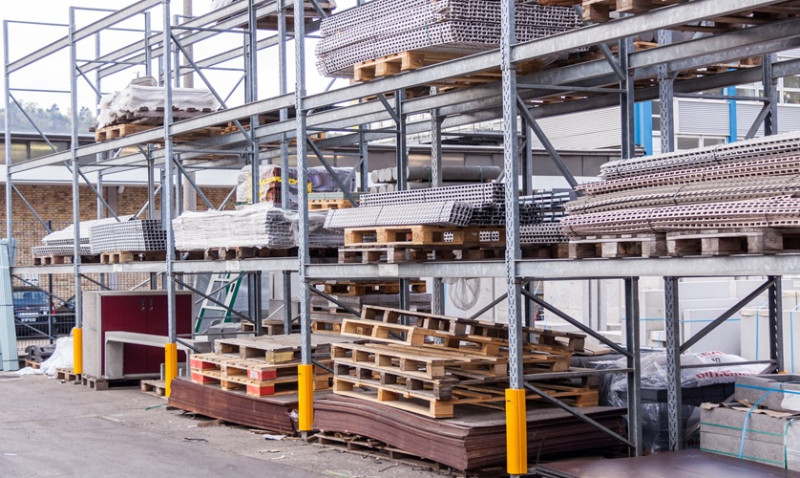
Choosing the right building materials is crucial for the success of any construction project. Whether you are building a new home, renovating an existing structure, or embarking on a commercial project, the materials you select will impact the durability, aesthetics, and overall performance of your building. In this comprehensive guide, we will explore essential tips to help you make informed decisions when selecting building materials.
1. Understand Your Project Requirements
Before diving into material selection, it’s essential to have a clear understanding of your project requirements. Consider the following factors:
- Purpose: What is the primary function of the building? Residential, commercial, or industrial?
- Location: Is the site prone to extreme weather conditions, such as heavy rain, snow, or high winds?
- Budget: What is your budget for materials? This will significantly influence your choices.
- Timeline: How quickly do you need the project completed? Some materials may require longer lead times.
2. Research Material Options
Once you have a clear understanding of your project requirements, it’s time to research the available material options. Here are some popular building materials to consider:
2.1 Wood
Wood is a traditional building material known for its versatility and aesthetic appeal. It is suitable for framing, flooring, and cabinetry. However, consider the type of wood, its treatment, and sustainability.
2.2 Concrete
Concrete is a durable and strong material ideal for foundations, walls, and floors. It can be molded into various shapes and is resistant to fire and pests.
2.3 Steel
Steel is a popular choice for commercial buildings due to its strength and longevity. It is also recyclable, making it an environmentally friendly option.
2.4 Brick and Masonry
Brick and masonry provide excellent insulation and are known for their durability. They are often used in exterior walls and can enhance the aesthetic appeal of a building.
3. Consider Sustainability
In today’s environmentally conscious world, sustainability is a significant factor in material selection. Consider the following:
- Recycled Materials: Look for materials made from recycled content to reduce waste.
- Energy Efficiency: Choose materials that improve energy efficiency, such as insulated panels or energy-efficient windows.
- Local Sourcing: Whenever possible, source materials locally to reduce transportation emissions and support local economies.
4. Evaluate Durability and Maintenance
Durability is a critical factor in material selection. Consider how well the materials will withstand wear and tear over time. Additionally, think about the maintenance requirements:
- Longevity: Choose materials that have a long lifespan to minimize replacement costs.
- Maintenance: Some materials require more upkeep than others. For example, wood may need regular sealing or painting, while brick may require less maintenance.
5. Aesthetic Appeal
The visual appeal of your building is essential, especially for residential and commercial projects. Consider how the materials will contribute to the overall design:
- Color and Texture: Choose materials that complement the architectural style and color scheme of your project.
- Finishes: Consider the finishes available for each material, as they can significantly impact the final look.
6. Consult with Professionals
Don’t hesitate to seek advice from professionals in the industry. Architects, contractors, and material suppliers can provide valuable insights and recommendations based on their experience. They can help you:
- Identify Suitable Materials: Professionals can suggest materials that meet your project’s specific needs.
- Understand Local Building Codes: Ensure that the materials you choose comply with local regulations and building codes.
7. Test and Sample Materials
Before making a final decision, it’s wise to test and sample materials. This can help you assess their quality and suitability for your project:
- Request Samples: Many suppliers offer samples of their materials. Take advantage of this to see how they look and feel in your space.
- Conduct Tests: If applicable, conduct tests to evaluate the performance of materials under specific conditions.
8. Consider Cost vs. Value
While it’s essential to stick to your budget, it’s equally important to consider the long-term value of the materials you choose. Sometimes, investing in higher-quality materials can save you money in the long run due to reduced maintenance and replacement costs.
9. Stay Updated on Trends and Innovations
The construction industry is constantly evolving, with new materials and technologies emerging regularly. Stay informed about the latest trends and innovations that could benefit your project:
- Smart Materials: Explore materials that incorporate technology for improved performance.
- Eco-Friendly Options: Keep an eye out for new sustainable materials that can enhance your project’s environmental footprint.
10. Make Informed Decisions
Ultimately, the key to choosing the right building materials is to make informed decisions. Take your time to research, consult with professionals, and evaluate your options thoroughly. By following these essential tips, you can ensure that your project is built to last and meets your aesthetic and functional needs.
Conclusion
Choosing the right building materials is a critical step in any construction project. By understanding your project requirements, researching material options, considering sustainability, and consulting with professionals, you can make informed decisions that will lead to a successful outcome. Remember to evaluate durability, maintenance, and aesthetic appeal, and stay updated on industry trends. With careful planning and consideration, you can select materials that not only meet your needs but also enhance the overall quality and longevity of your building.





